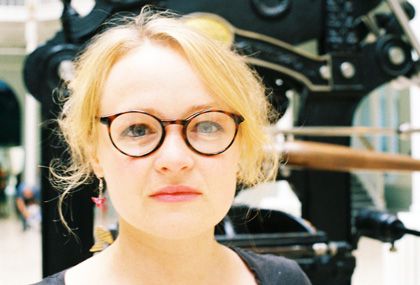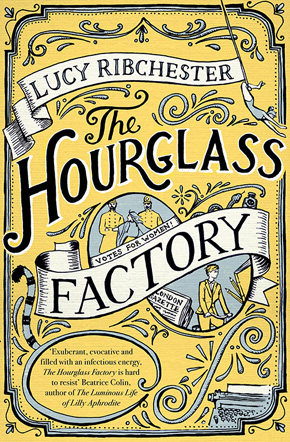Making history live and breathe
by Lucy RibchesterI’ve always loved history, from the dry, factual interpretation-board-in-a-castle kind, to the Young Sherlock Holmes imaginary Victorian cults and poison blow-pipe kind. But it was when I was doing my masters in Shakespearean Studies that I realised I could never become a historian. This was the first time I’d studied literature in its historical context. While I was supposed to be turning primary-sourced facts and opinions from the era into persuasive arguments about Renaissance drama, what I actually wanted to do was imagine what the people who wrote them ate and smelled like and how they treated their lovers and servants and what might happen if they got into a pickle with a madman. I wasn’t interested any more in facts, but in what they did to my imagination. And that imagination was sparked just as readily from the language of an era as from its historical facts. Without referencing a history book, I imagined Elizabethans eating medlars and quince and coney and hart because these were the words that Shakespeare and his contemporaries used in their plays. The words conjured up the scene, whether it was real or not. Rather than trying to piece together an accurate object-by-object photograph of an era, I was more interested in trying to paint a picture using the language I had to fuse what might have been reality with my own imagination.
When it came to writing The Hourglass Factory I did a lot of reading about the suffragettes, the Edwardian era, music halls, fashion and fetishism. And then I decided (sometimes consciously, sometimes not) how to use that information in the fictional world of the book. After reading about suffragette Isabel Kelley’s skylight break-in to Kinnaird Hall in Dundee I decided to change this into a trapeze leap by daredevil Ebony Diamond, to blend my love of music hall with the wild activities of the suffragettes. After reading about the shift from horse to motorised vehicles, and newspaper-making, and Sweeney Todd, I decided to make Fleet Street smell of exhaust fumes, horse dung, printers’ ink and barbers’ soap (spot the one that might not be quite so historically accurate). One of the team at Simon & Schuster recently quizzed me about her favourite fashion item in the book – a taxidermy mice necklace. I have indeed seen such a piece, but it was in a contemporary exhibition in an art gallery, not in an Edwardian book. When put together with the research I had done about Edwardian fashion – seagull hats, mufflers dangling tails, the legacy of Victorian taxidermy – I just decided it would fit.
The world of The Hourglass Factory probably bears about as much resemblance to the Edwardian era as a Dan Brown novel bears to the 21st century.”
It’s the choice of the historical fiction writer to do what they want with what they’ve read. Which is what makes Tom Stoppard’s Elizabethan era so different to Michael Hirst’s, or Angela Carter’s raucous Victorian world so different to Sarah Waters’ authentic mysterious one. In mainstream cinema there seems to be more leeway for crossover into fictional history, such as Wes Anderson’s The Grand Budapest Hotel or Guy Ritchie’s Sherlock Holmes (although there are some established book sub-genres such as steampunk and slipstream that allow for this). But in fiction the term ‘historical’ does seem to come with the baggage that the writer has not only done their research thoroughly but used it faithfully.
In truth, the world of The Hourglass Factory probably bears about as much resemblance to the Edwardian era as a Dan Brown novel bears to the 21st century. Or indeed a G.K. Chesterton novel bears to the real Edwardian era. Don’t get me wrong, there are bits in the book that are based on – in some cases horrific – real events. And I’d love for readers to be tempted into finding out what’s real and what’s not.
 Lucy Ribchester was born in Edinburgh in 1982. She studied English at the University of St Andrews and Shakespearean Studies at Kings College London. Her short fiction has been published in journals in the UK and US, and she writes about dance and circus for several magazines and websites. In 2013 she received a Scottish Book Trust New Writers Award for the opening chapters of her first novel The Hourglass Factory, now published in paperback and eBook by Simon & Schuster. Read more.
Lucy Ribchester was born in Edinburgh in 1982. She studied English at the University of St Andrews and Shakespearean Studies at Kings College London. Her short fiction has been published in journals in the UK and US, and she writes about dance and circus for several magazines and websites. In 2013 she received a Scottish Book Trust New Writers Award for the opening chapters of her first novel The Hourglass Factory, now published in paperback and eBook by Simon & Schuster. Read more.


